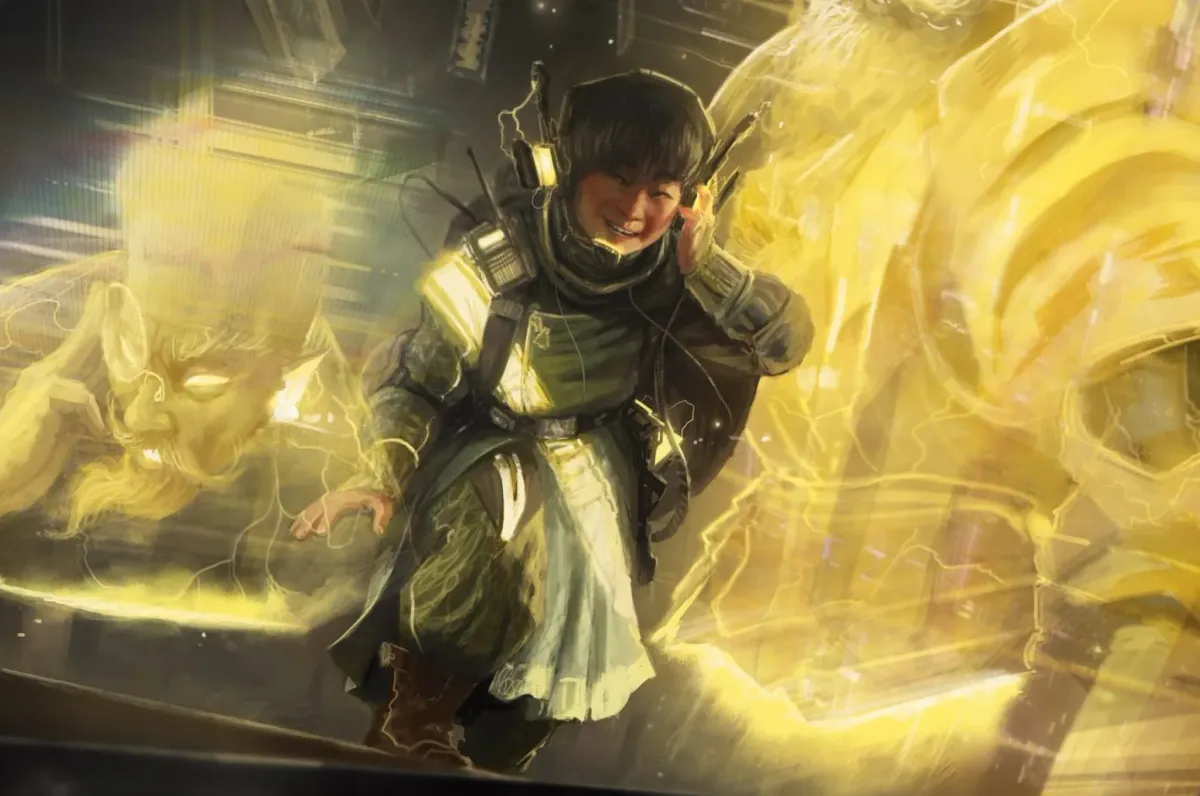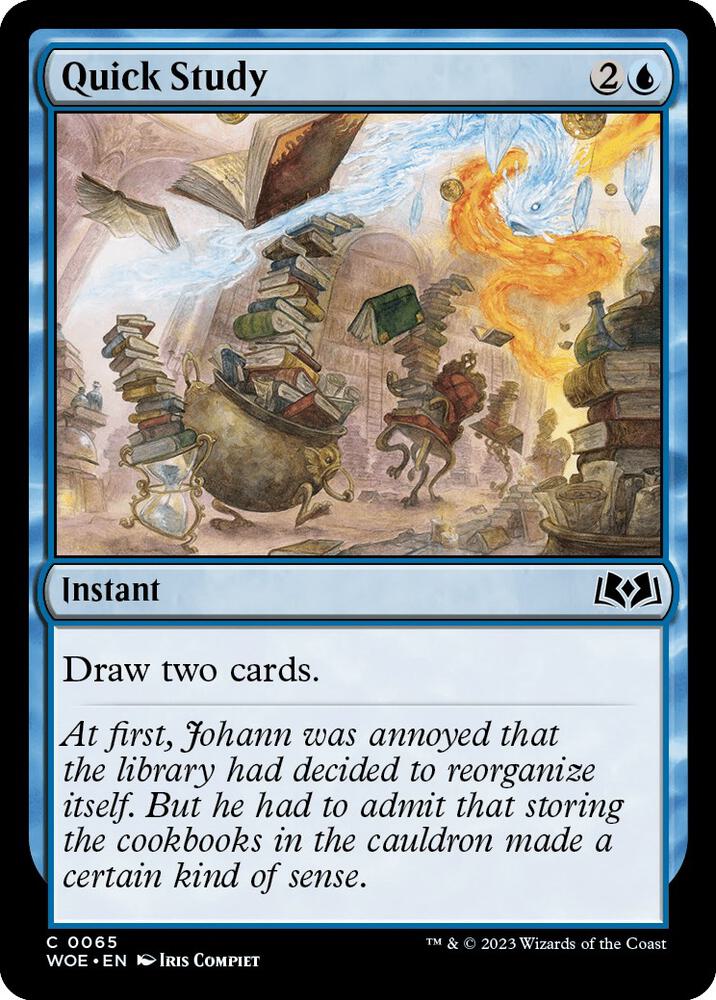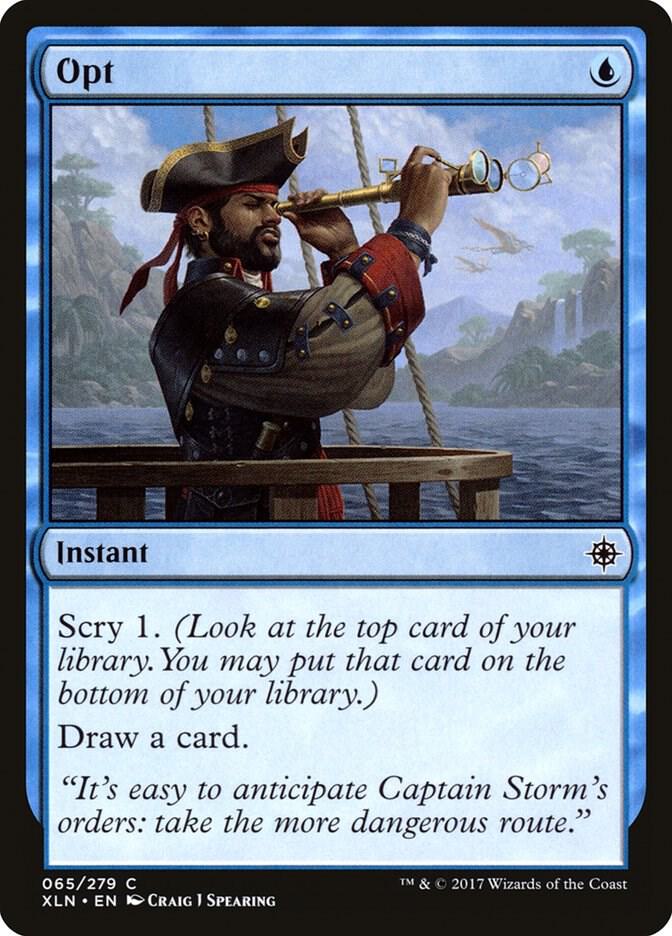The Most Controversial Card in Standard: The Many (Many) Angles of Card Evaluation
Sheltered by Ghosts looks straightforward on the surface; another Oblivion Ring. That being said, there are a lot of knobs and dials on this card, which we will break down piece by piece before getting into further evaluations to understand what makes this card so unique.

Hello everybody!
Today we're gonna put on our evaluation hats and look at one of the most played cards in standard today: Sheltered by Ghosts.
History Lesson: O-Ring
This card looks straightforward on the surface: it's this formats playable version of Oblivion Ring, seen previously in cards like Ossification, Silkwrap, and Banishing Light at its most basic. That being said, there are a lot of knobs and dials on this card, which we will break down piece by piece before getting into further evaluations to understand what makes this card so unique.
This card is two mana. Historically, the line of playability for this kind of effect is usually the efficiency or the modality of the effect, the clear line in standard being the effect is good for less than three mana, but if it costs 3 (or more) it has to have other lines of text. Obviously, things evolve over time, and standard MTG has been no stranger to powercreep, but this still seems to be more or less the case. Cards like Ossification, Leyline Binding, and Seal Away have been staples in standard formats due to how cheap they are. On the other hand, and less recently, cards like Ixalan's Binding, Cast Out, and Quarantine Field have cost more mana, but offered more flexibility in their usage, and have seen play, although they were more constricted to control decks.
But What Does it Actually Do?
The first line of rules text, "Enchant creature you control" are probably the first and most critical difference between this and most of the effects similar which have existed in the past. Whereas most of these enchantments have existed standalone, or attached to permanents significantly more difficult to interact with such as lands (see: Chained to the Rocks, Buried in the Garden), this card must target a card which is often contested on the battlefield face-up, and also requires a certain amount of creatures in deckbuilding. There actually is an analogue to this particular set of effects, which we will discuss later (but you get a cookie if you guess which card we are referring to in the comments. Hint: it was reprinted very recently but is not standard legal). This is, by and large, a weakness outright, due to the vulnerability of creatures at large, however, there is further reading to be done.
The next line of text is the most straightforward, the famous Banishing Light text. It is worth noting it does have the new-world text which prevents itself from being removed from the battlefield in response to its own trigger, and permanently exiling the targeted permanent. In contemporary magic, since about 2014, this is basically standard practice, however there have been exceptions to this rule such as Skyclave Apparition, although even with that card it didn't come up very often. This type of play is unavailable with this card, and it will also not blink a card if it is removed in response to its trigger as well. Examining the ability for its intended use, exiling a creature is very strong. The game is largely board centric in today's standard, and getting ahead on tempo is important. "Exile" is also important, seeing as there are many death triggers in the format which are relevant, and even some creatures and spells which grant indestructibility, which this can potentially get around. It is also a required trigger, meaning if your opponent has any creatures, it must target one of them unless otherwise illegal, and it is onesided, meaning it cannot target your own permanents.
"Enchanted Creature gets +1/+0 and has lifelink and Ward (2)" is a bit of a twist. It is the part of the card intended to make up for the creature being somewhat vulnerable, attempting to cover one of the weaknesses by making the enchanted creature significantly more difficult to remove, making up for the slight loss of tempo in the lack of board development with an extra point of power, and lifelink is excellent as a hedge against aggressive decks.
Evaluation
Deckbuilding Requirements
Before moving onto play patterns, let's quickly address what the card asks of you, the player. In deckbuilding, this card requires a critical mass of creatures. If you draw it without the ability to enchant a creature, the card is outright dead, and therefore doesn't really fit the slot of a "value" card, skewing it more towards aggression and tempo plays. This card (unlike an Ossification) cannot go into just any pile of 60 cards regardless of archetype, and the incentives would further push you to where it requires you to go, that tempo shell I was referring to.
This is further exacerbated by the card giving ward, rather than hexproof, meaning it does get significantly worse as games continue and players have the mana to pay to remove the enchanted creature, or wipe the board outright, granting what will often be the dreaded 2-for-1 special. Therefore, the card asks the deck it is played in to close games somewhat quickly, meaning it likely cannot center around a single tempo-oriented creature, as it would not push damage fast enough only giving +1/+0 to fully enable a bogles-style deck, unless edict effects are completely nonviable which is not the case in a standard format with both Liliana of the Veil and Sheoldred's Edict. All this to say this belongs in a deck which plays a lot of creatures but wants to push damage rather than play a controlling/longer game. In other words, this card belongs in agressive/tempo decks (again).
This matters to the evaluation in that if this archetype is being shut out by a hostile format, or a specific staple, then it would be nonviable. However, as we can see from the general texture of the format, agressive tempo is viable. Convoke shells, RG/R/RW Aggro, RW Auras, UW Aggro, and UW Oculus are all decks that play this card because of their gameplan facilitating it and are all by and large, viable.
Play Patterns
Here comes the part where I hate on this card. While we have found homes for it, and we have found that those homes are reasonable in terms of meta representation/gameplan, now is the part where we talk about how this card actually plays in game.
This card may have the most net-negative outcomes of any card I have ever seen in any card game ever at a legitimate competitive level.
Plus/Minus
Let's talk about what I mean by net-negative. I come from Yu-Gi-Oh, where part of a card's assessment is whether or not it goes "plus" or "minus", referring to generation of resources, which in Yu-Gi-Oh primarily refers to adding or subrtracting cards from your board or hand in order to pay costs versus how many cards they give/take away from your opponent as part of their resolution. This isn't strictly applicable to magic, because Magic has significantly more resources than Yu-Gi-Oh (think: mana, life totals, tempo, all of which matter much less in a game like Yu-Gi-Oh). As an example of what I mean, let's take a look at some very basic cards:


Here we have two cards, both of which are somewhat playable in standard, to serve as an example of what I mean by going plus in Magic, which also provide additional context as to how to translate that in Magic: the Gathering's mana system.
Opt does what the cards says, drawing a card, and allowing you to also take a look at one. From Opt, we can derive that, at instant speed, a card which serves to replace itself is worth slightly less than one mana, seeing as a card which replaces itself and allows some information about your next draw to be gained is worth exactly one mana. We will skip some of the minutiae, as leaving a card on top with the scry is worth nothing, and scrying to the bottom in certain situations can be worth as much as an entire card. In most situations, short topdecking, this card shows us replacing oneself at instant speed is again, worth slightly less than one mana on average, in a vacuum.
Quick Study draws two cards outright. Applying what we know from evaluating Opt, going +1 (Quick Study replaces itself, and then draws an extra card, leaving you "up" a card, or +1), we can derive the replacement of Quick Study is worth about one mana, and therefore going +1 is worth about 2 mana, give or take.
Obviously, these rules are not hard and fast nor definitive of overall power level, seeing as there are powerful cards historically which go actively negative (think Unmask, Force of Will), cards that go even which are extremely powerful (Thoughtseize, Leyline Binding), or cards that go massively plus which see almost no play (Overflowing Insight, Jin-Gitaxias, Core Augur). That's when we have to talk about the other major axis our card game exists on which Yu-Gi-Oh does not, efficiency.
Efficiency
In Yu-Gi-Oh, ever card costs 0 mana, which makes evaluating cards on a +/- basis much easier than Magic: the Gathering. In Magic, we must also evaluate efficiency. We started to touch on this in the previous section, when we determined going +1 is approximately worth 2 mana, absent context. But short of deep-delving the concepts of efficiency historically and holistically (maybe in another article), let's address the axis on which Sheltered by Ghosts needs to be efficient.
Sheltered by Ghost, is, at its core, a kill spell. Kill spells historically, in standard, cost 2 mana and have a slight drawback, think Doom Blade, Ultimate Price, or current standard all-stars Go for the Throat and Get Lost. Now, obviously, there is more upside to Sheltered by Ghosts than just killing a creature. It does exile the creature, which occasionally matters (especially against red decks in this standard), and gives +1/+0 and lifelink, which is particularly relevant against red decks in this standard. In addition, secret text, but it does not only hit creatures, potentially taking care of problematic cards, particularly post-sideboard when people bring in permanent=based hate. The drawback on the card (in lieu of not hitting artifacts or giving your opponent map tokens) is that it requires a creature to be alive, and also gives your opponent a small window of interaction wherein the card is both very inefficient and negative value.
So what the hell happens when I actually cast this card, Kazi?
So, this is where we explore the problems (finally for realsies this time I promise) with this card. There is a lot of interaction in this standard, entirely at instant speed, and all of which is very live against Sheltered by Ghosts both in and outside of its vulnerability window. While this card shines against mono-red, a deck often encouraged to tap out in early turns in addition to spending removal quickly which does not universally kill all threats, against almost any other deck in the format (UB midrange, Bounce decks, Domain, White control) there is an abundance of removal which prevents this card from almost ever entering the battlefield safely as long as your opponent has a card or cards in hand. Beyond that, if your opponent does not have cards in hand, you and your opponent likely are drawing with few cards and a lot of mana, so their next removal spell will turn into a 2-for-1 and give them a threat while also removing whichever one you attached the spell to, and that's in the best-case situation where you had a creature on the battlefield while topdecking anyways.
Basically, the card is a living, breathing blowout. There are too many decks which actively hold mana up during the opponent's turn to make use of it consistently, in my opinion.
There are some slight exceptions. There are decks, like UW Oculus or RW Eerie Aggro, which actively invest maindeck slots in protecting their creatures, which have more reasons to play this. But these decks also have other weaknesses which this card does little to address, hence their own lack of popularity.
Slotting this in decks like UWR convoke, which is already vulnerable to boardwipes, or perhaps most egregiously, Esper Pixie which both actively wants to take its creatures/enchantments off of the battlefield and has access to Go for the Throat, or even in more fringe piles like Selesnya Cage or Azorius Flash just doesn't make any sense to me at all. Sure, playing the traditional removal spells doesn't have the upside of gaining life or exiling, but outside of the red decks, neither of these things matter enough to make up for the fact that this card so often just blows the user out of the water on the stack, or even just later in the game when the enchanted creature is eventually traded with. Even cards that don't hit the creature itself, but rather the enchantment, can lead to terrible situations, as they put a creature back onto the battlefield, especially in combat. This makes decisions for pushing damage (which to remind you, decks playing this card often want or even need to do) significantly more punishing than they would be with a cleaner kill spell. I understand this likely speaks to some of my skills as a Magic player, but I think there is something to be said for allowing yourself easier decisions, as correct decisions win matches.
When I look at the top decks in the format, I am presented with a myriad of options, but all of them pack instant speed removal, even those red aggressive decks Sheltered by Ghosts is so good against. All of them carry huge potential to make Sheltered by Ghosts the worst card you have ever seen. All of them carry reasonable targets, and even more reasonable, efficient removal at instant speed. I just can't bring myself to play this card in any of the decks I think traditionally would. This is especially true considering there two very strong options at the same cost (namely Get Lost and Soul Partition), which are nearly the same in terms of what they handle.
I will not register this card, at least in the current format. In all liklihood, I won't be registering the card in future formats as long as the instant speed removal suite remains somewhat strong. It's just way too hard to get value, and building your gameplan to manipulate the board state to enable this card, while essentially playing one behind as long as you don't feel safe casting it is just not palatable Magic at a competitive Standard level in my opinion. While I would usually consider myself a high-risk high-reward kind of player, I also sincerely value flexibility and motility, and cards like these which have a tendency to get easily turned around tend to limit the moves I can make.
TL;DR
"Sheltered by Ghosts, target my Rabbit"
"In response, Go for the Throat, target that Rabbit?"
"Shit"
*scoop cards run away*
Comments ()